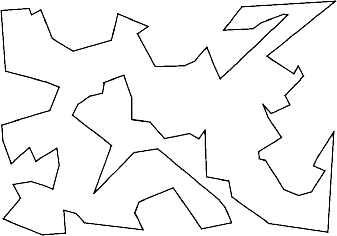当前你的浏览器版本过低,网站已在兼容模式下运行,兼容模式仅提供最小功能支持,网站样式可能显示不正常。
请尽快升级浏览器以体验网站在线编辑、在线运行等功能。
3033:Traveling Salesman
题目描述

Long before the days of international trade treaties, a salesman would need to pay taxes at every border crossed. So your task is to find the minimum number of borders that need to be crossed when traveling between two countries. We model the surface of Earth as a set of polygons in three dimensions forming a closed convex 3D shape, where each polygon corresponds to one country. You are not allowed to cross at points where more than two countries meet.
输入解释
Each test case consists of a line containing c, the number of countries (4 ≤ c ≤ 6000), followed by c lines containing the integers n x1 y1 z1 … xn yn zn, describing (in order) the n corners of a closed polygon (3 ≤ n ≤ 20). Then follows a line with one integer m (0 < m ≤ 50), and then m lines with queries ca cb, where ca and cb are country numbers (starting with 1). No point will be on the line between two connected points, and −106 ≤ x, y, z ≤ 106 for all points. No two non-adjacent edges of a country share a common point. The input is terminated by a case where c = 0, which should not be processed.
输出解释
For each query, output the number of borders you must cross to go from ca to cb.
输入样例
6 4 0 0 0 0 0 1 0 1 1 0 1 0 4 1 0 0 1 0 1 1 1 1 1 1 0 4 0 0 0 1 0 0 1 0 1 0 0 1 4 0 1 0 1 1 0 1 1 1 0 1 1 4 0 0 0 0 1 0 1 1 0 1 0 0 4 0 0 1 0 1 1 1 1 1 1 0 1 2 1 2 1 3 0
输出样例
2 1
最后修改于 2020-10-29T06:50:45+00:00 由爬虫自动更新
共提交 0 次
通过率 --%
| 时间上限 | 内存上限 |
| 1000 | 65536 |